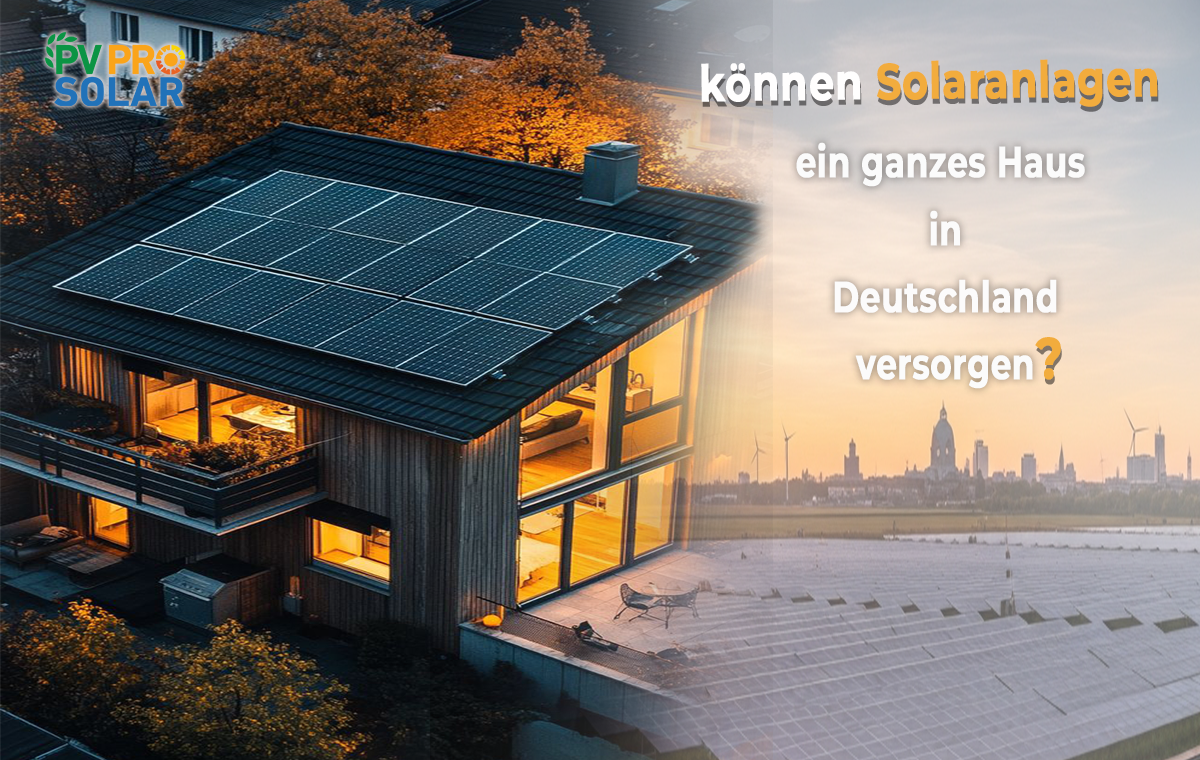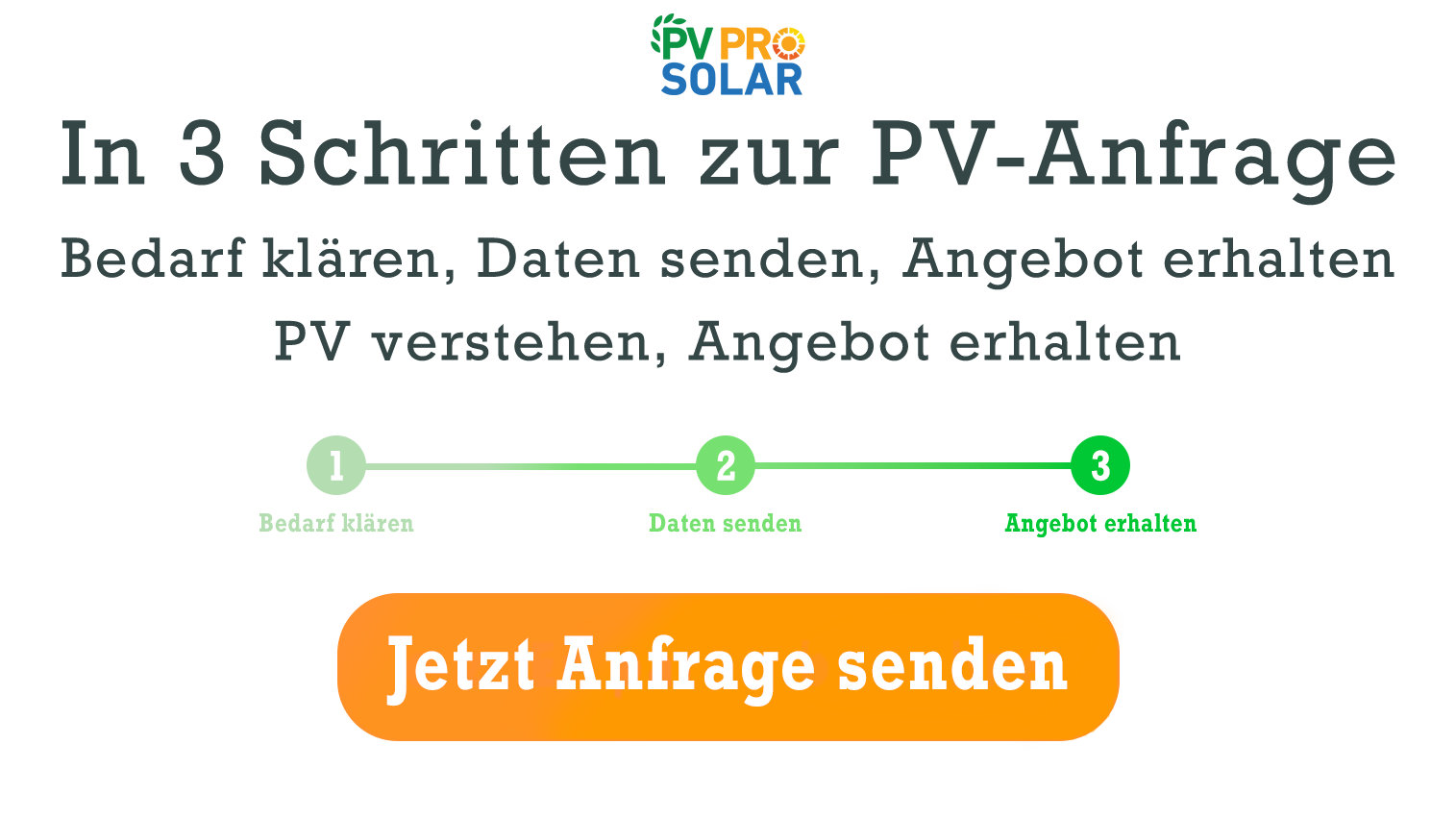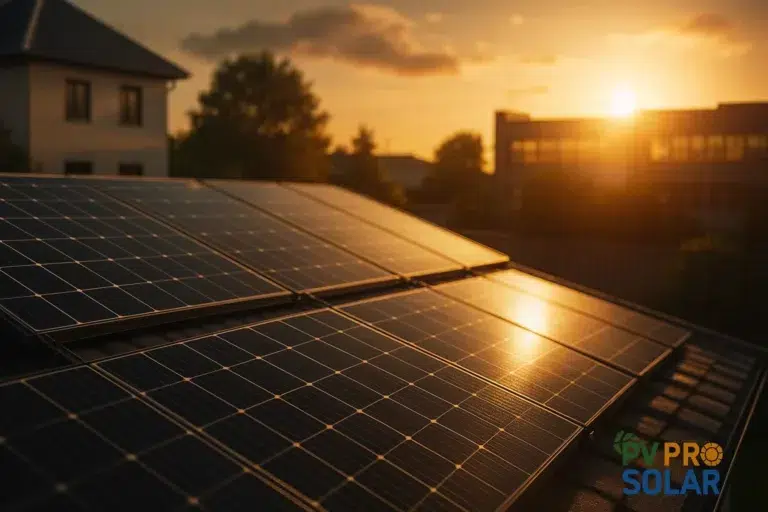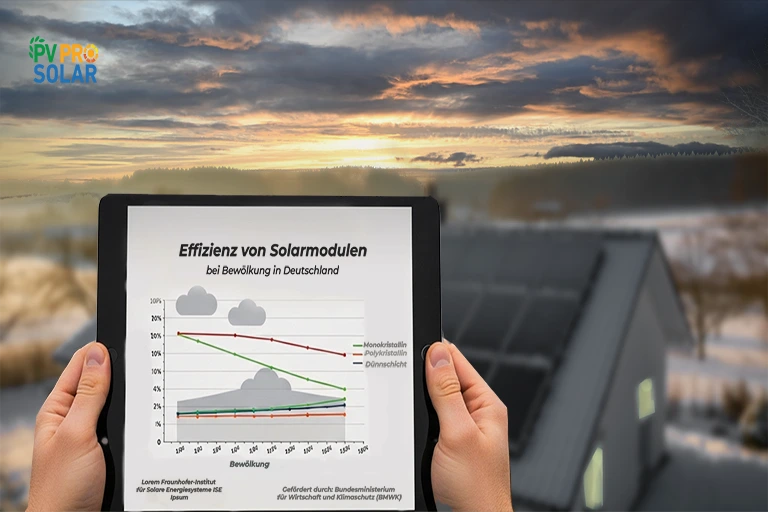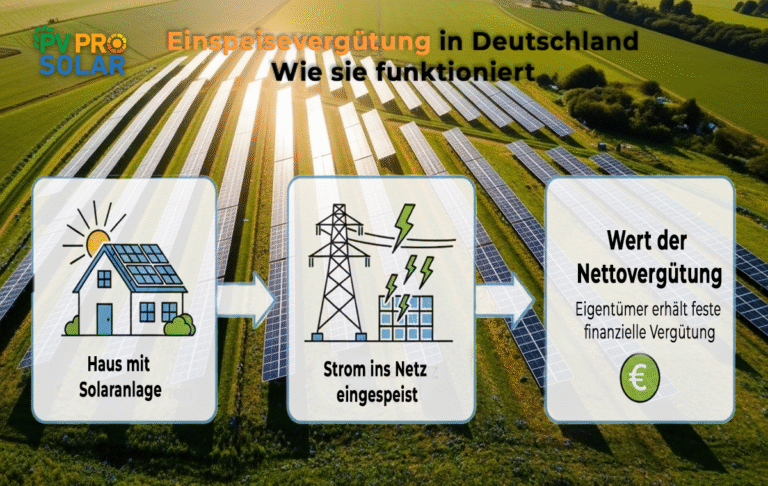Can Solar Panels Power a Whole House in Germany? All the Facts for 2025
More and more German households are turning to solar energy to cut electricity costs and reduce their environmental footprint. But can solar panels power a whole house in Germany? This question is essential for homeowners considering an investment in photovoltaic systems. In this article, we take a close look at the technical requirements, solar systems, battery storage solutions, costs, government incentives, and system efficiency. Step by step, we’ll demonstrate how solar energy can reliably supply your home with electricity.
What Factors Influence the Performance of a Solar System in Germany?
The efficiency of a solar installation depends on several key factors:
- Sunlight Hours and Climate Data: Solar radiation varies by region in Germany. For instance, Lower Saxony—cities like Hanover, Bremen, and Wolfsburg—receives an average annual solar irradiance of 1,000–1,200 kWh per square meter. Seasonal fluctuations play a major role: in summer, a PV system often generates twice as much electricity as in winter.
- Module Type and Efficiency: Monocrystalline panels currently offer the highest efficiency at 21–23%, while polycrystalline modules average 17–19%. High-quality panels also perform better under low-light conditions.
- Inverters and System Losses: The inverter converts direct current (DC) from the panels into alternating current (AC) for home use. Modern inverters operate at 97–99% efficiency. However, minor losses still occur due to wiring, temperature variations, and system aging.
- Real-Life Example – Hanover: A 5 kWp system installed on a typical residential rooftop can generate approximately 4,500 kWh annually. This can cover 80–90% of a four-person household’s electricity needs—without storage.
How Much Electricity Does an Average Home in Germany Use?
- Typical Consumption: A household of four consumes roughly 3,500–4,500 kWh per year.
- Modern Appliances and High-Tech Homes: Homes equipped with electric vehicles, heat pumps, or electric heating may require between 5,000 and 6,500 kWh per year.
- Daily and Seasonal Usage Patterns: Energy demand peaks in the mornings and evenings, while solar systems generate most power during daylight hours. Without storage solutions, any excess electricity is fed into the grid.
Can a House Be Fully Powered by Solar Panels Without Battery Storage?
- Direct Use vs. Grid Dependence: Without a battery, you can only use the electricity your system produces in real time. At night or during overcast days, power must be drawn from the grid.
- Boosting Self-Consumption: Smart appliances, timed usage, and load management systems can increase self-consumption. Typically, households reach 30–40% self-use without a storage system.
- Case Study – Bremen: A 5 kWp solar system can generate sufficient electricity during the day, but at night, households still need 2–3 kWh from the grid. In such cases, a small solar generator or plug-in balcony system can serve as a helpful supplement.
How Do Battery Storage Systems Help Power a Home Around the Clock?
- Battery Technologies: Lithium-ion batteries are the most efficient and durable option. Lead-acid batteries are cheaper but offer lower efficiency and shorter lifespans.
- Recommended Battery Size: To remain independent at night or during poor weather, an 8–12 kWh storage capacity is ideal for an average household.
- Efficiency and Energy Losses: Battery systems typically have an efficiency rate of 85–95%. Charging and discharging cycles come with minor energy losses, which should be factored in.
- Case Study – Wolfsburg: A home equipped with a 10 kWh battery can cover nearly 100% of its annual electricity demand (4,500 kWh) using solar energy. Even in winter, solar power can still partially meet energy needs if regional conditions are considered.
What Determines the Right Size of a Solar System for a Home?
- Roof Size and Load Capacity: A 100 m² roof with optimal orientation can accommodate around 10 kWp of panels.
- Household Energy Profile: Homes with electric cars or heat pumps will need larger systems.
- Seasonal Output Variations: Solar output is lower in winter. Systems should be sized with the lowest production months in mind.
Example Calculations:
- 5 kWp → 4,500 kWh/year
- 7 kWp → 6,300 kWh/year
- 10 kWp → 9,000 kWh/year
How Do Roof Orientation and Tilt Angle Affect Solar Power Generation?
- South-Facing is Ideal: An east-west orientation typically results in 10–15% less energy production.
- Tilt Angle: A 30–35° angle is optimal. Flat roofs require tilted mounting structures to achieve the best results.
- Shading Considerations: Obstructions like trees, chimneys, or neighboring buildings can significantly reduce efficiency. A proper shading analysis is essential to maximize output.
What Incentives and Subsidies Are Available in Germany in 2025?
- KfW Grants and Loans: Government-backed low-interest loans and grants are available for solar systems and battery storage through the KfW Bank.
- EEG Feed-In Tariff: Surplus electricity fed into the public grid is compensated. In 2025, the rate is 6–8 cents per kWh.
- Tax Incentives: Private homeowners and businesses benefit from reduced VAT and depreciation options.
- Regional Subsidies: States like Lower Saxony, Bremen, and Wolfsburg offer additional bonuses for battery storage installations.
How Much Does a Full Solar System Cost in 2025?
Estimated Prices:
- 5 kWp System: €8,000–12,000
- 7 kWp System: €11,000–16,000
- 10 kWp System: €15,000–22,000
Additional Costs:
- Battery Storage (8–12 kWh): €5,000–8,000
- Installation & Equipment: €2,000–4,000 (includes inverter and mounting)
Return on Investment:
Depending on electricity prices, consumption patterns, and incentives, most systems pay for themselves within 8–12 years. Feed-in tariffs and maintenance costs should also be factored into your calculations.
Is Investing in Solar Panels for a Whole House Worth It?
- ROI Calculations: With annual savings of €1,000–1,500, a 5 kWp system typically pays for itself within 8–10 years.
- Example – Wolfsburg Family: This household saves €1,200 per year on electricity, earns a 10% annual return, and reduces CO₂ emissions by around 3 tons per year.
- Long-Term Benefits: Increased energy independence, environmental advantages, and added property value. Many homeowners now operate completely self-sufficient solar systems.
What Common Mistakes Should Homeowners Avoid?
- Incorrect System Sizing: Undersized systems lead to continued reliance on grid power.
- Neglected Maintenance: Dirty panels can lose up to 15% efficiency.
- Missing Out on Subsidies: Failure to apply for funding means losing valuable financial support.
- Improper Storage Selection: A battery that’s too small limits energy independence.
Solar panels can power a whole house in Germany, provided the system is properly sized and includes the right combination of storage, panel orientation, and smart consumption. With tailored planning and by considering regional climate data and available government incentives, homeowners can achieve a high degree of energy independence. The investment not only reduces long-term electricity bills but also contributes to sustainability and increases property value.
Yes, with sufficiently large PV panels, an appropriately sized battery system, and energy-efficient appliances, full solar self-sufficiency is achievable. However, daily and seasonal usage patterns must be carefully planned.
The payback period typically ranges from 8 to 12 years, depending on system size, household energy use, storage options, and available subsidies. Can I make my home 100% solar-powered?
How long does it take for a solar system to pay off?
